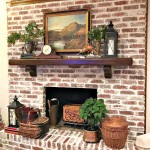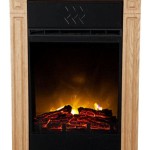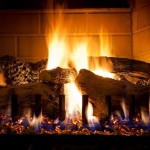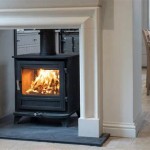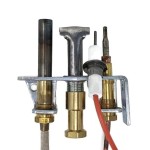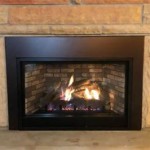Stone Veneer: Transforming a Brick Fireplace
A brick fireplace, a classic architectural feature, can sometimes feel dated or clash with a modern aesthetic. Stone veneer presents a viable solution for updating the appearance of an existing brick fireplace without the expense and disruption of a complete demolition and rebuild. This article explores the process, benefits, and considerations involved in applying stone veneer to a brick fireplace, offering a comprehensive guide for homeowners and contractors alike.
Stone veneer, unlike natural stone, is a manufactured product designed to mimic the look and feel of real stone. It is typically made from a lightweight concrete mix, molded and colored to replicate various stone types, textures, and sizes. Its lighter weight is a crucial advantage when applying it over existing structures like brick fireplaces, as it minimizes the additional load on the foundation and framing.
The decision to use stone veneer over brick often stems from a desire to modernize an existing space, achieve a specific design aesthetic, or enhance the overall value of a home. A brick fireplace may not complement a newly renovated living room, or a homeowner might desire the rustic charm of a stacked stone look. Stone veneer offers a cost-effective and relatively straightforward way to achieve these transformations.
Preparing the Brick Surface
Proper surface preparation is paramount for a successful stone veneer installation. The existing brick surface must be clean, sound, and adequately prepared to ensure a strong and lasting bond with the mortar and stone veneer. Neglecting this step can lead to veneer detachment, cracking, or other structural issues over time.
The initial step involves thoroughly cleaning the brick surface. This typically requires a wire brush to remove loose debris, dirt, and any existing paint or coatings. A pressure washer can be used for a more intensive cleaning, but care should be taken to avoid damaging the brick or forcing water into the brick's porous structure. Stubborn stains or efflorescence (a white, powdery deposit) may require specialized cleaning solutions designed for masonry.
After cleaning, the brick must be inspected for any signs of damage, such as cracks, crumbling mortar, or spalling (where the brick surface flakes off). These issues need to be addressed before applying the stone veneer. Small cracks can be filled with a masonry crack filler, while larger areas of damaged mortar should be removed and replaced with fresh mortar. Severely damaged bricks may need to be replaced entirely. It’s important to use a mortar that is compatible with the existing brick to ensure proper bonding and prevent further damage.
The next crucial step is applying a scratch coat of mortar. This scratch coat serves as a bonding agent between the brick and the stone veneer. It provides a rough, textured surface that allows the mortar used to adhere the stone veneer to grip effectively. A bonding agent can also be added to the scratch coat mix for increased adhesion. The scratch coat should be applied evenly across the entire brick surface, using a notched trowel to create horizontal grooves. These grooves provide even more surface area for the veneer mortar to grip. The scratch coat needs to cure for at least 24 hours, or as directed by the manufacturer's instructions, before proceeding with the veneer installation.
Installing the Stone Veneer
The installation process requires careful planning and execution to achieve a visually appealing and structurally sound result. Proper layout and adherence to manufacturer guidelines are essential for a successful project.
Before beginning the installation, it’s crucial to dry-fit the stone veneer. This involves laying out the stones on the floor in the desired pattern and arrangement. This allows you to visualize the final appearance and make any necessary adjustments to the stone placement. It also allows you to determine how much stone veneer will be needed and identify any areas where the stones may need to be cut to fit.
Mixing the mortar according to the manufacturer’s instructions is crucial. Use a mortar specifically designed for stone veneer installation. Adding too much or too little water can affect the mortar’s strength and adhesion. Prepare the mortar in small batches to avoid it drying out before it can be used. Consistency is key, and the mortar should be thick enough to hold the stone in place but still workable.
When applying the stone veneer, start at the bottom and work your way up. Use a trowel to apply a layer of mortar to the back of each stone. The mortar should be thick enough to create a strong bond but not so thick that it oozes out between the stones. Press the stone firmly onto the scratch coat, wiggling it slightly to ensure good contact. Maintain consistent spacing between the stones, using spacers if necessary. The spacing will depend on the desired look and the type of stone veneer being used.
As you work, periodically check the alignment of the stone veneer to ensure that it is level and plumb. Use a level and plumb bob to make any necessary adjustments. Wipe away any excess mortar that squeezes out between the stones with a damp sponge. This will prevent the mortar from hardening on the surface of the stones. For corner pieces, ensure that they are properly aligned and secured to create a seamless transition. Cutting stone veneer may be necessary to fit around corners, openings, or other architectural features. A wet saw with a diamond blade is the best tool for cutting stone veneer. Remember to wear safety glasses and a dust mask when cutting stone veneer.
After the stone veneer has been installed, it is important to allow the mortar to cure completely before applying any sealers or finishing products. The curing time will vary depending on the type of mortar used and the environmental conditions. Refer to the manufacturer’s instructions for specific curing times.
Addressing Fireplace Specific Concerns
When working with a fireplace, certain considerations are unique to the structure and its operational purpose. These concerns primarily revolve around heat resistance, fire safety, and maintaining proper ventilation.
Heat resistance is a primary concern when selecting stone veneer for a fireplace. Not all stone veneers are created equal in terms of their ability to withstand high temperatures. Specifically, the area immediately surrounding the firebox requires materials with a higher heat tolerance. Consult with the stone veneer manufacturer to ensure the chosen product is rated for fireplace use and can withstand the temperatures generated by the fireplace. Certain types of natural stone veneer are better suited for fireplace applications than manufactured stone due to their inherent heat resistance.
The fireplace's firebox and flue must remain unobstructed. The stone veneer should not extend into the firebox opening or impede the proper functioning of the flue. Improper installation can create a fire hazard by restricting airflow or causing the veneer to overheat. Maintain the original dimensions of the firebox opening and ensure that the flue is clear of any obstructions.
Consider the expansion and contraction of materials due to heat. The brick, mortar, and stone veneer will all expand and contract at different rates when exposed to heat. This can lead to cracking or detachment of the veneer if proper expansion joints are not incorporated into the design. Install expansion joints at regular intervals, particularly around the firebox opening. These joints will allow the materials to move independently without putting stress on the veneer.
Using a non-combustible mortar specifically designed for fireplace applications is critical. Standard mortar may not be able to withstand the high temperatures and can break down over time, leading to structural issues. Fireplace mortar is formulated to withstand extreme heat and is less likely to crack or crumble. When selecting a mortar, ensure that it is certified for use in fireplace applications.
Finally, consider a heat shield for the wall above the fireplace. A heat shield is a non-combustible barrier that protects the wall from excessive heat. It can be made from metal, stone, or other heat-resistant materials. A heat shield can help to prevent the wall from overheating and potentially catching fire. It also helps to deflect heat back into the room, making the fireplace more efficient.
By addressing these specific concerns, homeowners and contractors can ensure that the stone veneer installation on a brick fireplace is not only aesthetically pleasing but also safe and functional.

Installing Stone Veneer Over A Brick Fireplace Grand River

Stone Veneer Over A Brick Fireplace Updates The Look

Installing Stone Veneer Over A Brick Fireplace Grand River

Stone Veneer Over A Brick Fireplace Updates The Look

Stone Veneer Over A Brick Fireplace Updates The Look

Pin By Tarra Wills Efkarpidis On For The Home Brick Fireplace Remodel Stone

How To Cover A Brick Fireplace With Stone

How To Diy A Stacked Stone Feature Over Existing Brick

7 Popular Stone Veneer Fireplace Design Trends Mason S Mark

Thin Stone Veneers Make A Fireplace Update Easy Swenson Granite 100 Natural Stones
Related Posts

